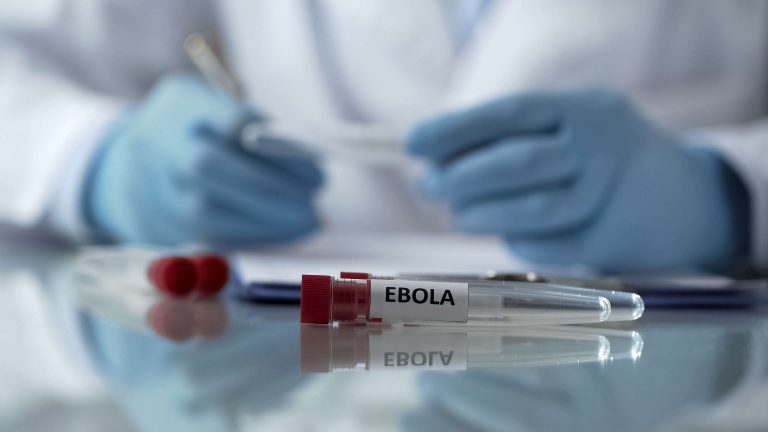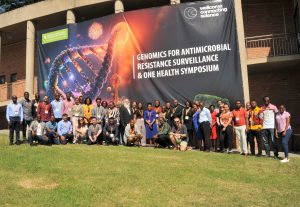1 April 2019
The second largest Ebola virus disease (EVD) outbreak recorded to date, is being reported from the Democratic Republic of Congo (DRC). The country was affected by EVD earlier in 2018, when 54 cases of EVD with 33 deaths were reported from the Équateur Province, located towards the western border of the country. Shortly after the end of this outbreak was announced (http://apps.who.int/iris/bitstream/handle/10665/273348/SITREP_EVD_DRC_20180725-eng.pdf?ua=1), a second outbreak of EVD was reported from the eastern borders of the country (http://www.who.int/ebola/situation-reports/drc-2018/en/). Genomic sequencing of Ebola viruses associated with the two outbreaks confirmed that the outbreaks were unlinked. By 27 March 2019, a total of 1044 cases of hemorrhagic fever have been identified, of which 652 had a fatal outcome. Laboratory testing confirmed EVD for 978 of the cases investigated, with 66 cases remaining probable (i.e. not laboratory confirmed) (https://www.who.int/ebola/situation-reports/drc-2018/en/). The number of health care workers that have been affected has risen to 78, with 27 deaths.
The cases have been reported from the health zones of the North Kivu and Ituri Provinces, located towards the eastern border of the DRC. This is a remote and conflicted location in the DRC, located more than 3000 Km from the capital Kinshasa (https://www.afro.who.int/news/who-calls-free-and-secure-access-responding-ebola-outbreak-democratic-republic-congo), but in close proximity to borders with Uganda, South Sudan and Rwanda. According to the WHO situation report dated 26 March 2019, there are no confirmed cases of cross-border spread associated with this outbreak yet. More than 46 million travelers have been screened since the start of containment efforts and the 10th of February 2019 in the attempt to prevent exportation of the disease. Containment efforts, including ring vaccination and strengthening of cross-border surveillance, continues to be mobilized and strengthened (https://apps.who.int/iris/bitstream/handle/10665/311507/SITREP_EVD_DRC_20190326-eng.pdf?ua=1).
By 23 March 2019, more than 91 000 persons have been vaccinated using an experimental Ebola vaccine. In addition, several experimental therapeutics are being used to treat patients under monitored emergency use protocols (https://apps.who.int/iris/bitstream/handle/10665/281194/SITREP_EVD_DRC_20190212-eng.pdf?ua=1 and https://www.who.int/ebola/drc-2018/treatments-approved-for-compassionate-use-update/en/).
Challenges to the containment efforts include ongoing violent conflict with displacement of large numbers of the local population and the wide-spread expanse of the outbreak in the affected region of the DRC (https://apps.who.int/iris/bitstream/handle/10665/281194/SITREP_EVD_DRC_20190212-eng.pdf?ua=1). WHO advises against any restriction of travel and trade to the Democratic Republic of the Congo based on the currently available information. WHO continues to monitor travel and trade measures in relation to this event. The regulations for evidence of a valid yellow fever vaccination certificate apply. Precautions against malaria should be applied as per routine practice. Malaria must be considered a high priority in the investigation and management of any febrile traveler.
On 1 April 2019, there has been no suspected or confirmed cases of EVD related to this outbreak in South Africa. The following is emphasized at all levels to maintain epidemic preparedness and response capacity in the country, in the event of inadvertent cases being detected.
- Coordination
- Maintain activation of Provincial Outbreak Response Teams and ensure capacity for preparedness and response is developed and sustained in accordance with the IHR (2005).
- Laboratory services
- Ensure that key laboratories (NHLS laboratories linked to prioritized EVD hospitals, and private laboratories) have ongoing training and competency evaluations for VHF protocols and able to receive and handle such cases currently and in the foreseeable future.
- Case management, Infection prevention and control (IPC)
- Ensure availability of appropriate PPEs
- Maintain and monitor designated isolation facilities
- Ensure ongoing IPC preparedness training
- Environment and Port Health Services
- Alert all key stakeholders in the Port environment. Port Health must take a lead role on all health related incidents at the Ports and respond to public health risks
- Ensure adequate staffing (trained) at POEs with the required equipment needed.
- Emergency Medical Services
- Assess Ebola PPE availability as per national guidelines and assist to source PPE
- Assess training needs and facilitate training through various platforms
- Develop SOP for disinfection of ambulance, contaminated areas etc.
Follow these links to read more about EVD:
National Institute for Communicable Diseases: https://www.nicd.ac.za/index.php/ebola-virus-disease/
World Health Organization, Ebola virus disease webpage: http://www.who.int/ebola/en/.
World Health Organization, Ebola frequently asked questions: http://www.who.int/csr/disease/ebola/faq-ebola/en/
World Health Organization, Ebola vaccines frequently asked questions: http://www.who.int/ebola/drc-2018/faq-vaccine/en/





